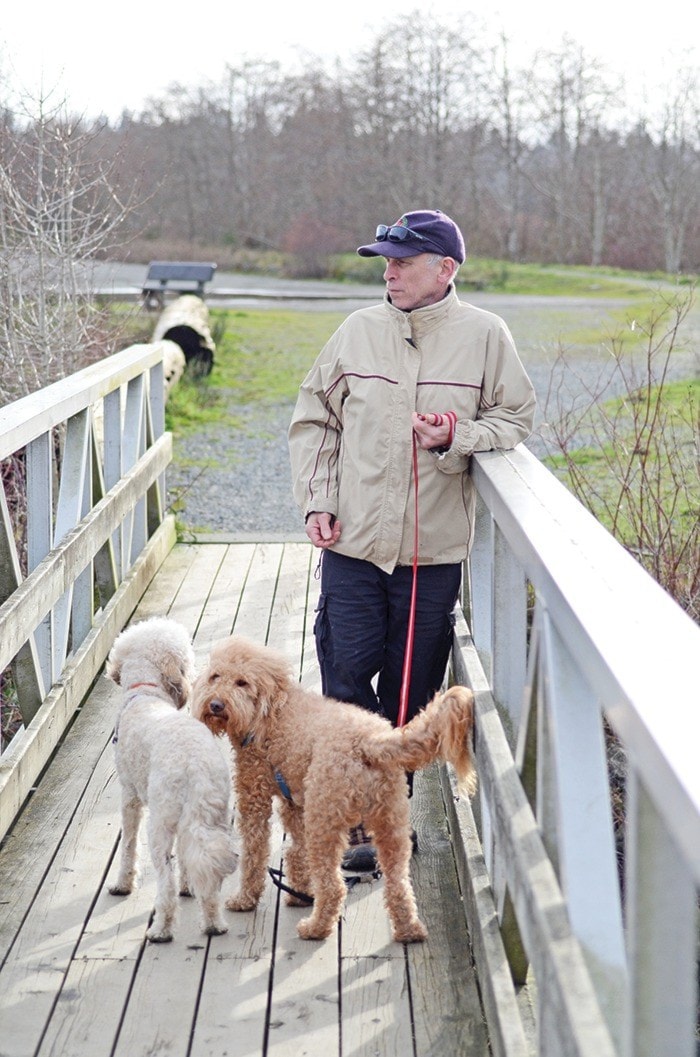Some Campbellton residents disagree with the Campbellton Neighbourhood Association’s assertion that their revitalization plans for the Myrt Thompson Trail will be of benefit to the neighbourhood.
The CNA is currently working on various proposals to spruce up the trail – first presented to the public last October at an open house at the Enterprise Centre – some of which involve the installation of viewing platforms and parking areas in an attempt to bring more people to the area and make it a nicer experience for those who venture down to that section of the river.
“Our focus at the CNA has been to revitalize Campbellton,” Brian Shaw of the CNA told the Mirror at the October public forum. “We have embarked on a route that focuses on river access, because it’s our greatest asset.”
Shaw told the Mirror one of the CNA’s goals is to get more people to the area, which will in turn drive business to want to locate there, which will in turn drive more people to the area, creating a circle of increased economic activity.
Ed Ivanesko and his wife, however, own Myrtle Thompson’s old house at the end of Maple Street – right next to one of the proposed locations for a new viewing platform that is part of the CNA’s current plan – and they say while the CNA’s proposed improvements might sound great for increasing visitors, they aren’t in the best interest of those who actually live there.
“It’s not like I’m entirely down on the Neighbourhood Association and their efforts,” Ed says, pointing to the pedestrian crosswalk, community garden, banner projects and other initiatives the CNA has backed or undertaken, “I just think this one is way out in left field.”
Not only do the Ivaneskos and other local residents want less traffic on Maple Street – not more – but they also don’t see how the expenditure on viewing platforms and informational kiosks will economically benefit anyone.
“I don’t think increasing the number of people coming here is going to benefit the community that much,” Ed’s wife JoAnne says. “I mean, yeah, they might buy a coffee, but where are they even going to do that? They’ll bring it with them from Tim Hortons. They might, once, go for lunch, but they’re not going to do it every time. This trail isn’t going to be some kind of economic driver for the area. People come here to go for a walk, not to spend a bunch of money.”
What’s needed, the Ivaneskos say, “is not some kind of ‘grand vision,’ it’s just some trail upkeep so it doesn’t keep disintegrating like it is,” according to Ed.
“They say they don’t have any money in their budget for upkeep, but what that really means is they don’t choose to put it high in their funding priorities. You can build artificial fields that benefit the soccer community, but you can’t pay a couple of summer students to come down here and do a little trail upkeep?”
Kathy and Don McCartney – who own the next house up the river from the Ivaneskos – agree.
Kathy says she’s not against improvements to the trail, as long as they don’t increase public use of Maple Street. What she’d prefer, however, is for people to be directed to less residential areas.
“The traffic down here is already bad on any given day,” she says. “As property owners, we already have no peace and quiet down here.”
Her suggestion is that if the CNA wants more people to use the trails in Campbellton, they should look at what they can do to the other side of the river, where there aren’t residences that would be disturbed by the possible increase in traffic.
“There are already parking lots over there,” she says. “All they would need over there is some more garbage cans.”
Shaw says the CNA has been meeting with the concerned neighbours, and since doing so, he has come to agree with their assertions that it’s not a good idea to drive more traffic to the end of Maple Street, calling that solution, “not acceptable.”
“The feasibility study requested by the city doesn’t reach into that issue far enough, but has brought the problem to light,” Shaw says, adding those involved in the planning are looking at alternative solutions since coming to that same conclusion – because the CNA is only interested in solutions that all interested parties are happy with.
Ed Ivanesko’s other concern is for the fish habitat, which he feels is getting lost in all the discussion about economics and beautification.
The Maple Pool, a “sanctuary of sorts for spring salmon,” Ed says, is a sensitive ecosystem, and the introduction of structures – or increased foot traffic along its banks causing erosion problems – could mess with the delicate balance of the river.
“Taking how I feel about what I will see out my window and how I feel about traffic and everything else about my feelings out of the equation,” he says, “it’s still a terrible idea to start messing with the banks of this area of the river.”
The CNA’s proposals are still in the planning, consultation and funding-acquisition stages, so neighbourhood concerns still have time to be further addressed before any implementation happens.
Ed, at least, will be making a point to be at any future meetings or presentations discussing the proposed project, to make sure the CNA is working for all the area’s residents who may be affected by these plans.
